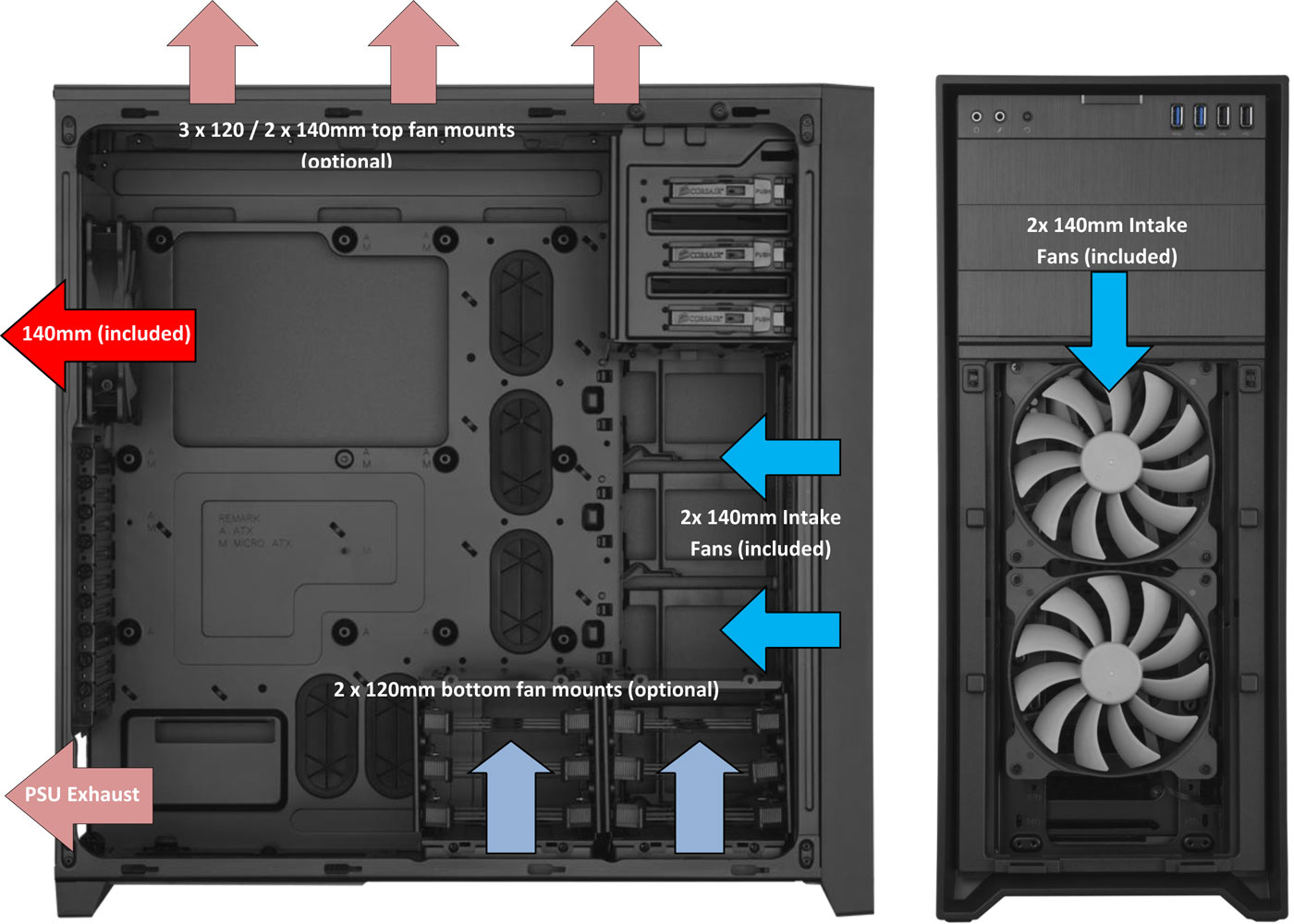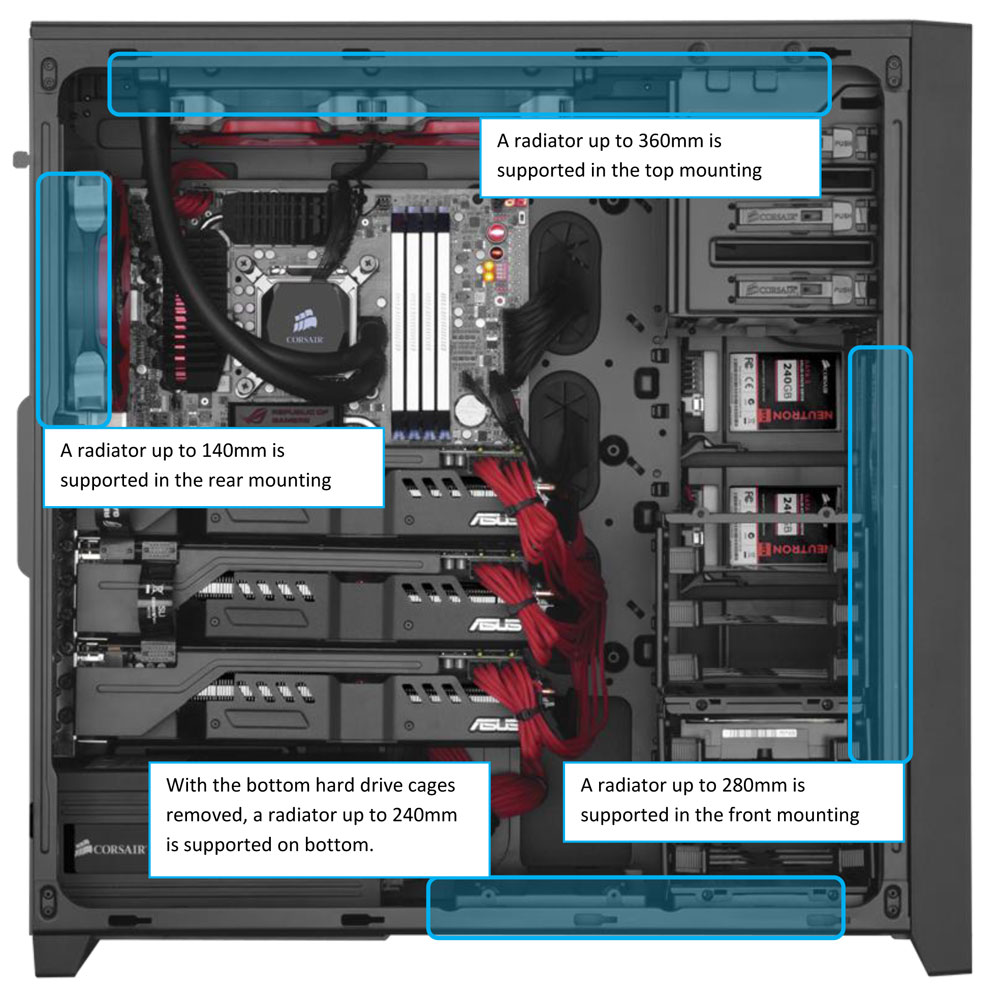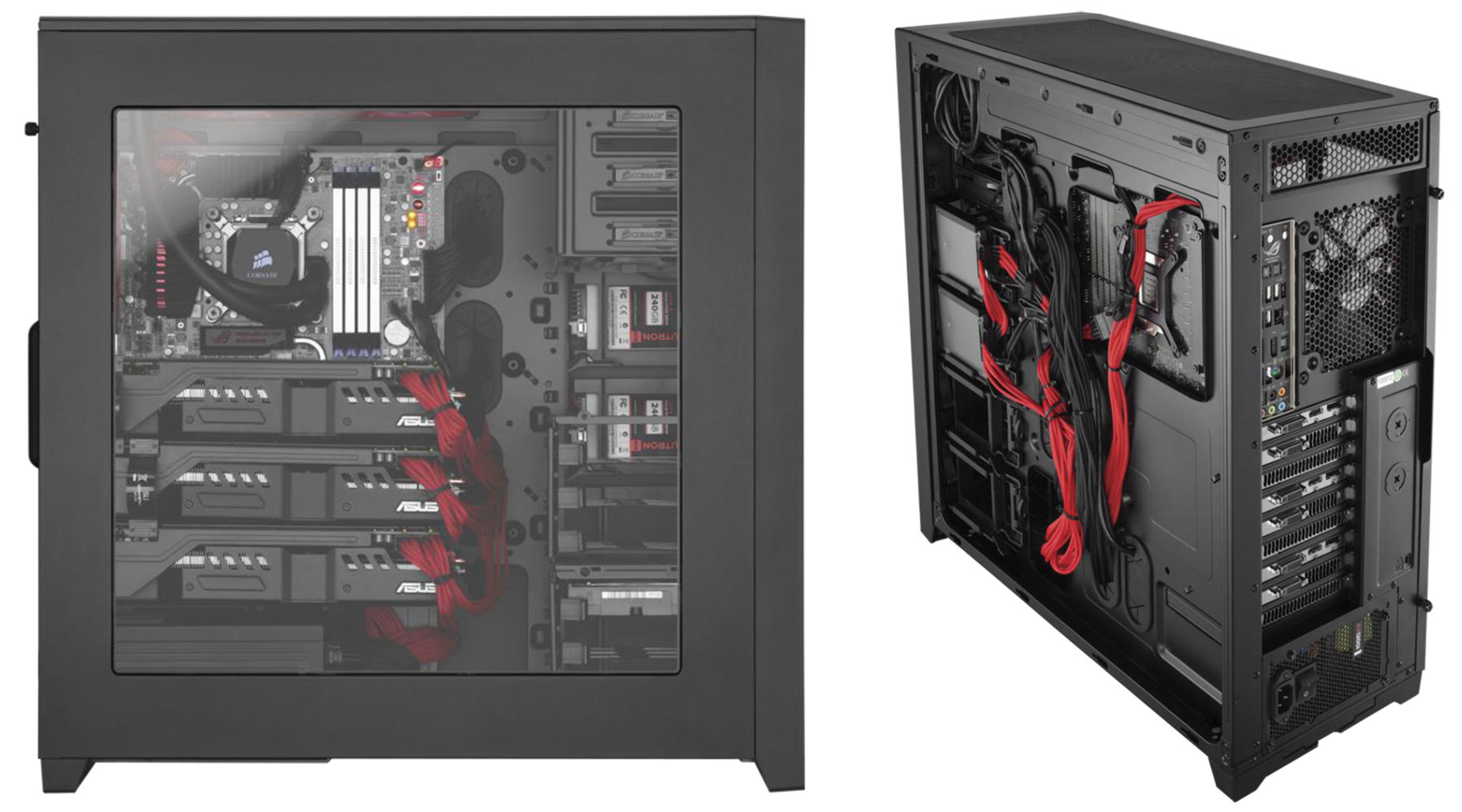Review - Corsair Obsidian 750D Full Tower Case
Overview
The Obsidian 750D is Corsair’s third new case in the Obsidian line this year. It slots between the 350D microATX chassis and the 900D super-tower. The 750D continues the same elegant styling and refined look of the Obsidian line of cases, which feature brushed aluminum and steel construction.
The case offers an array of cooling configuration options (both air and liquid), and more than a dozen storage bays.
Features & Specifications
- Support for up to 8 fans (3x AF140L fans included)
- Support for a radiator up to 360mm in length (top), 280mm (front), 280mm (bottom)
- Cable routing cutouts with rubber grommets
- CPU backplate cut out for easy CPU cooler upgrades
- 3 tool-free 5.25 inch drive bays
- 6 tool-free 3.5 inch hard drive trays with integrated SSD support
- 4 tool-free 2.5 inch SSD drive bays
- 3 removable filters (front intake, under PSU, top of case)
- Front panel has 2 USB 3.0 ports, 2 USB 2.0 ports, headphone and microphone jacks, and power and reset switches
- Thumbscrew side panel removal for quick access
- 9 expansion slots for multi-GPU compatibility
- Motherboard compatibility with microATX, ATX, EATX, XL-ATX
- Matte black interior
- 2 year warranty
Cooling Options
Below are two graphics that outline the extensive cooling options found in the Obsidian 750D. The first image shows the possible fan locations, along with a color-coded air flow diagram. When mounting fans in the bottom location, the HDD cages may need to be removed or relocated.
The second image shows the four possible locations of liquid cooling radiators. Four different size radiators are supported: 140mm, 240mm, 280mm and 360mm. As with the extensive air-cooling options, some drive cages may need to be removed to accommodate some configurations.


Unboxing
Upon opening the case I was greeted with the standard Styrofoam inserts, with plastic wrapped around the chassis. What I found once all that was removed was one sleek and sexy black aluminum case. Upon first glance I could immediately see that the quality was top of the line, from the brushed aluminum front plate to just the solid feeling from picking it up and moving it around.
The Obsidian 750D fits it’s naming of a “full tower,” and is by no means small in any way. For a moment I wondered if my desk was tall enough for the case, but a test fitting put those fears to rest.
Coming from a smaller sized case, my initial impressions let me know I have been selling myself short when it comes to getting a computer case. There was a small defect on the top grill where it seems that the adhesive wasn’t sticking fully. I was able to push the grill down, and it seems to be sticking fine now.
Component Inspection
A quick glance at the front panel components shows two standard USB 2.0 ports, two USB 3.0 ports, a microphone and headphone input. Under those inputs lie the drive bays (do people even use optical drives these days?).

In my opinion the drive bay covers make the case look significantly better than if there were any drives installed. The drive fronts would ruin the flow of the case. Below the drive bays sits the front fan housing, which is held in place by two push-in clips. If you push the housing on both top corners the front can be removed which exposes the fans and a protective dust filter.
The top of the 750D has a nice mesh cover as well where additional fans can be placed, to allow for even greater cooling. Something new to me was finding a mesh grill on the bottom of the case (rather than a solid plate), which helps contribute to increased airflow. There is even a removable dust filter below where the power supply would be placed.
At the time I thought all of these dust filters were a bit of overkill. However, I soon learned the error of my ways. When I was moving the components from my old case to the Obsidian 750D new - all of those parts had PLENTY of dust I had to blow out.
Finishing off the case has a standard rear panel that comes equipped with a fan as well. Last but not least was the clear side panel. The giant side window allows for a great view of all the components inside.
The Obsidian 750D’s real standout features came once the side panels were removed and I got to the guts of the case. For anyone who currently has a case and feel where they feel cramped working inside, or if you want flexibility in component placement - this case has you covered many times over.

Viewing the closed side of the case (opposite of the clear window), you will see wires pre run from the front panel to give you an idea of how well you can hide the rest of your wires from view. There are precut areas with grommets giving you multiple options on where and how you can run wires behind the motherboard. Additionally this panel houses removable brackets, which can house up to four 2.5” SSD drives.
This is something that initially caught me by surprise, but with the slim compact design of SSD drives I can see how placing them flat along the side of the case allows for more internal room. When viewing the case with the side panel off, I was able to see all of the placement options for storage in the case.
At the top were three easy access bays for 5.25” devices or drives. The bottom of the case offers six trays for standard 3.5” or 2.5” drives. The trays allow for six drives stacked normally. You can also do a 3x3 arrangement of 2.5” drives.
The thing I liked the most about the trays is how easy they are to remove and handle. Due to their flexible design and preinstalled tabs, inserting drives (with no tools) is as simple as can be.
The storage options at the bottom of the case are a bit of overkill for me. However I know plenty of people who could make use of these storage options. Overall the interior features of the case make it give confidence the installation of components should be a snap.
